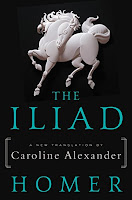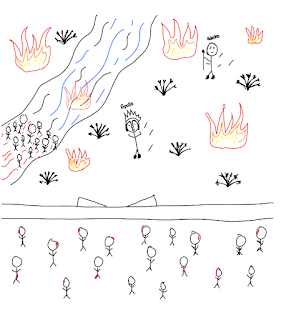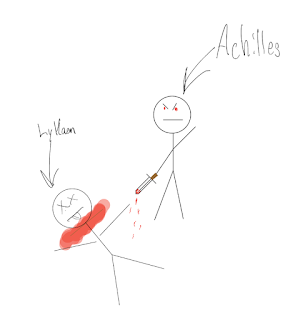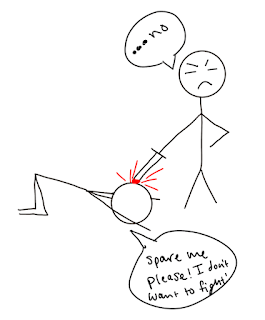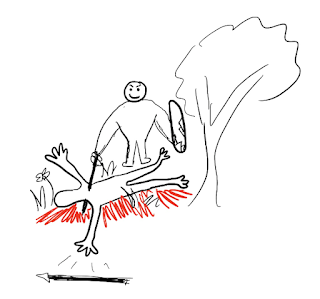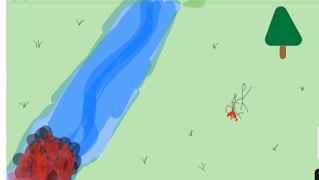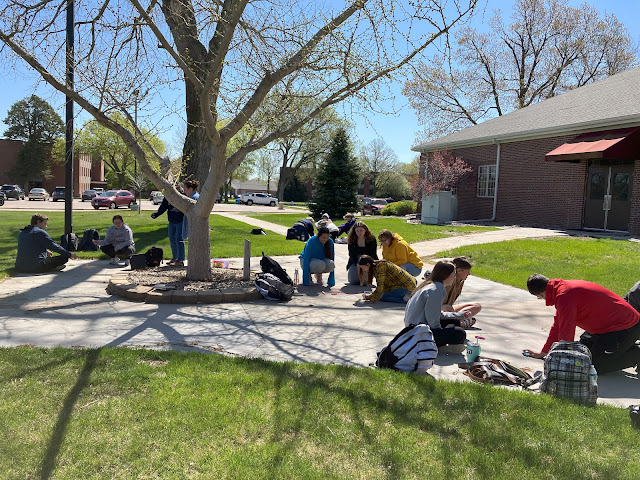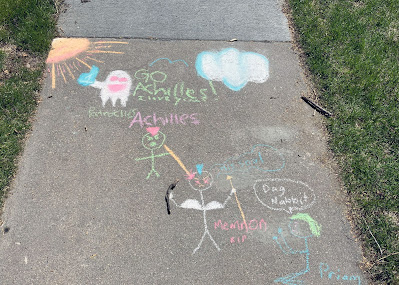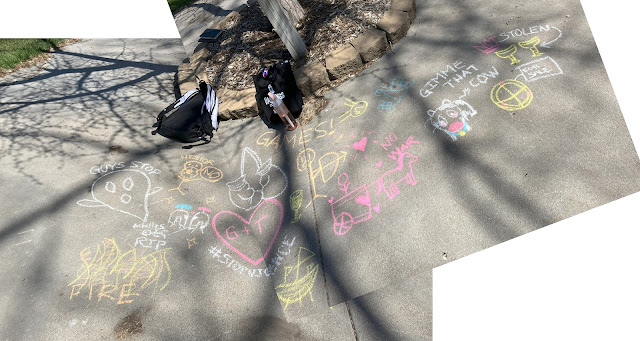That was the case this Spring in ENGL 211 Ancient Literature, which focused on the topic of Troy. In addition to Homer's Iliad (c. 8th century BCE), which covers a few weeks near the end of the famous Trojan War, we read plays by three different authors (Aeschylus, Sophocles, and Euripides) from 5th century BCE Athens, and Quintus of Smyrna's Posthomerica (c. 4th century CE), an epic poem that picks up where the Iliad leaves off. Our goal was to understand how an author's historical and cultural contexts affect their telling of a story.
We learned about the contested history of Troy (did it actually exist?) and how the Athenians' experiments in democracy influenced playwrights' explorations of the story of the Trojan War. We debated whether the Iliad is a stitched-together collection of oral stories or a clearly plotted narrative poem, and whether there are Christian influences in the much later Posthomerica.
This work required a difficult balance of literary close reading and knowledge of the cultures from which these texts emerged.
For the course's final project, students worked together to create an interactive eBook about important scenes and characters from the Iliad. Each student chose a character, and then as a class we determined how to group those characters into tableaus of important scenes. Each student researched their character and wrote a brief bio, including the character's role in the Iliad, and a list of ancient texts the character appears in.
Check out this collaborative and interactive project from the students in ENGL 211!
Practice
How did we prepare for a large collaborative project like this? Practice.
In one in-class activity, students practiced creating character tableaus from book 21 of the Iliad on their iPads. Imagery in the Iliad is often intense, and groups had to represent the most significant details from their chosen scene. The scene in which Achilles kills poor Lycaon must be especially memorable, because every group in the class chose to draw it for this tableau practice session!
Lycaon was the young son of Priam and Laothoe. Earlier in the war, Achilles captured Lycaon and sold him into slavery. He was ransomed by a family friend and returned to Troy. Only 12 days after returning, however, he meets Achilles again. Achilles is not so kind this time.
Book 21 of the Iliad reflects Achilles's inability to control his emotions. The Iliad begins with him refusing to fight for the Greeks because Agamemnon has taken away the slave woman Briseis. Achilles's stubbornness wins out even when the Greeks (most of his friends!) are being slaughtered and disaster seems imminent. After his companion Patroclus dies, however, Achilles re-enters the war and goes on a rampage, killing indiscriminately and excessively. Even though he is a hero, his actions in the Iliad demonstrate the dangers of not being able to control one's emotions. His merciless killing of Lycaon is only one of many examples of excessive violence in the Iliad.
In another class session, we took advantage of a beautiful day to practice drawing character tableaus from the Posthomerica. Like the Iliad, the Posthomerica is full of violence, which students were happy to portray in cheery scenes with pastel sidewalk chalk.
Book 3. After killing many Trojans, Achilles is killed by an arrow to the ankle, shot by Apollo.
Book 4. Achilles's mother, the sea goddess Thetis, holds funeral games for her son in which she gives away Achilles's most prized possessions - armor, a chariot and horses, and cattle he has taken from Trojans.
Bonus
. . . and a bonus craft project depicting Oenone jumping onto the funeral pyre of Paris. Oenone, a nymph, was Paris's first wife, whom he left when he met Helen. In the Posthomerica, Paris is mortally wounded, but Oenone refuses to help him and he dies in agony. Overcome with grief, however, she jumps onto his funeral pyre and her ashes are later buried with his. Quintus seems to be suggesting here that Paris did not deserve her.


